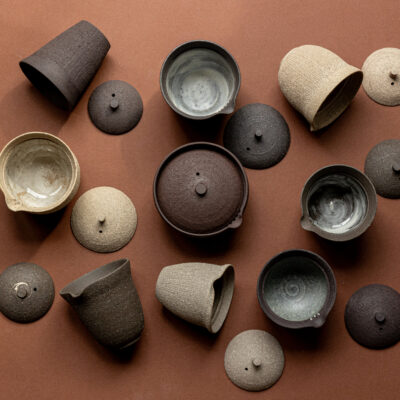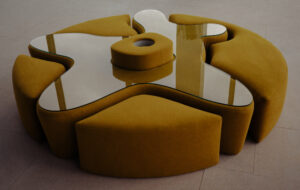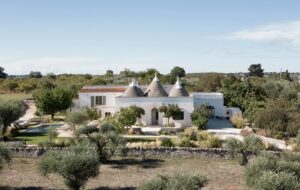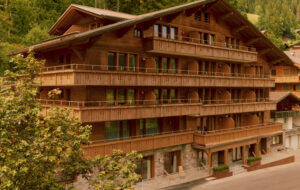|
|
||
|
“It’s interesting to straddle these different worlds,” says Benjamin Ball, referring to the intermediate space between architecture and sculpture that Los Angeles design studio Ball-Nogues’ work occupies. Since we last visited the practice (icon 052), it has been constructing installations that mix digital design and fabrication with clever materiality and good old-fashioned craft. Take Cradle, a public art project set against the wall of a recently renovated Frank Gehry car park in Santa Monica, California. A set of over 300 mirror-polished steel balls are hung from a single point, creating a poised surface bulging out from the wall. The workshop-constructed balls were loaded into a digitally designed formwork that resembles a skateboard ramp, before being lifted and tied into a position of equilibrium on the wall.
Ball variously describes the project as resembling not only a giant Newton’s Cradle executive toy, but also the awning for an invisible store, a fly’s compound eye, even the “banana hammock” swimming trunks of the city’s beach fraternity. In what can be a dour-faced and somewhat pious field of digital design, this is a refreshingly relaxed attitude. As Ball says, “The viewer can bring to it what they will, what they see in it is what they see in it …” Gravity’s Loom is another project the studio has just completed, set in the entrance pavilion of the Indianapolis Museum of Art. It is the largest and most ambitious example of a type of project that the duo calls “suspensions”, which consist of strings draped from the ceiling, clustered together to create porous spatial effects. Ball-Nogues has developed software for designing the suspensions, as well as building its own fabrication machine (the Installator, currently in its second incarnation), which uniquely airbrushes each string in order to create images within the spatial field. “What you get with the Installator is the capacity to make these installations with thousands of strings, each of which is unique,” says Ball. “Together the strings form a complete unity, with the colour coalescing to enable us to paint in three dimensions.” Unlike previous suspensions, which have created the effect of volumes floating in space, Gravity’s Loom creates a torqued surface that swoops down near the ground. The colour pattern is based on an abstraction of a late-baroque cornice, although this presents an ever-changing vista to viewers as they move around. “It’s essential that there’s three-dimensional movement around these works,” says Ball. “They have qualities of being sculpture, but they relate to the body very much as architecture; they unfold through movement and time.” What Ball-Nogues brings to an increasingly crowded field is a particular synthesis of technical research and aesthetic sensibility. “We look very critically at tools and how they are employed,” says Ball. “As we work more and more we develop a greater understanding of the qualities that these installations take on, how they can expand as artwork, and also how they can expand as craft, design and architecture – we don’t see those fields as mutually exclusive.” |
Image Monica Nouwens
Words Douglas Murphy |
|
|
||
|
|
||















